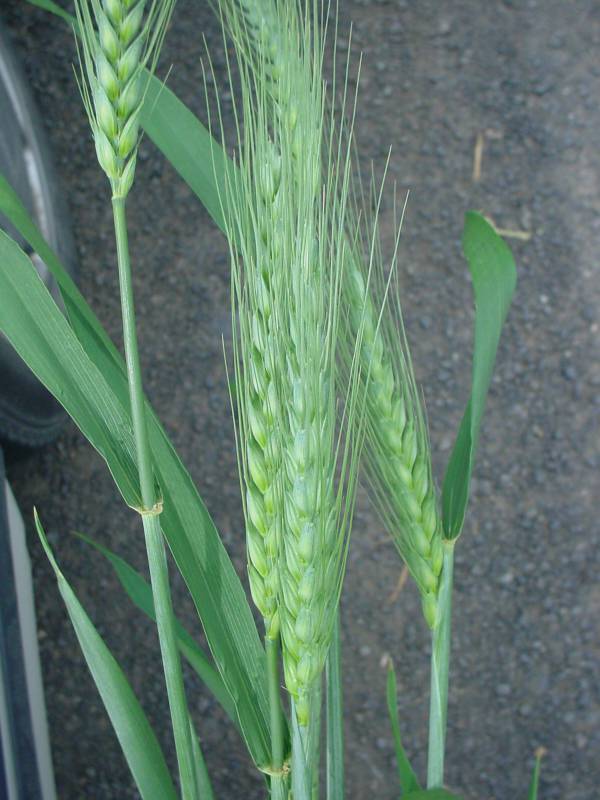Hosted by the University of Washington Herbarium, Burke Museum
Publication: Sp. Pl. 1: 85. 1753.
Origin: Introduced from Eurasia
Herbarium search: CPNWH
Notes: FNA24: "Triticum aestivum is the most widely cultivated wheat. Both winter and spring types are grown in the Flora region. In addition to being grown for bread flour, T. aestivum cultivars are used for pastry-grade flour, Oriental-style soft noodles, and cereals.
Club wheats, sometimes called Triticum compactum Host, are cultivated in the Pacific Northwest for export to Asian markets. They have short (3.5–6 cm), compressed spikes, with up to 25 spikelets having 2–6 florets. Their spike shape varies from oblong or oval with uniformly distributed spikelets to club-shaped with spikelets crowded towards the apex.
No wild hexaploid progenitors of Triticum aestivum are known, but the two distinguishing characteristics of wild Tritcum species, fragile rachises breaking into wedge-shaped units and closely appressed glumes, are found in plants cultivated in Tibet and named T. aestivum subsp. tibetanum J.Z. Shao."
Last updated 1/1/2024 by David Giblin.

